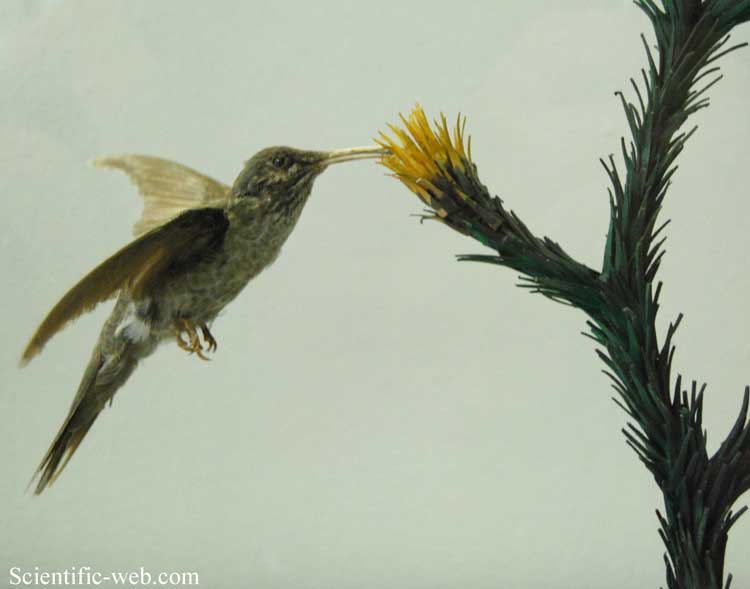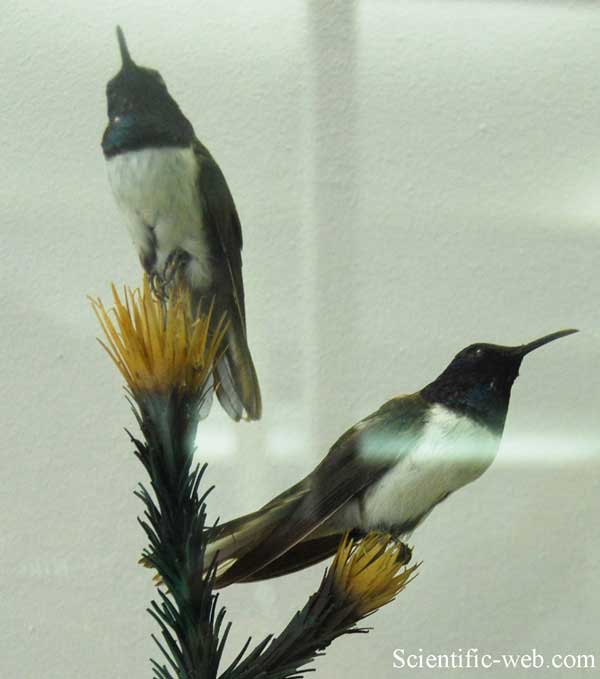
Oreotrochilus estella, Photo: Michael Lahanas
Superregnum: Eukaryota
Regnum: Animalia
Subregnum: Eumetazoa
Cladus: Bilateria
Cladus: Nephrozoa
Superphylum: Deuterostomia
Phylum: Chordata
Cladus: Craniata
Subphylum: Vertebrata
Infraphylum: Gnathostomata
Superclassis: Tetrapoda
Cladus: Reptiliomorpha
Cladus: Amniota
Classis: Reptilia
Cladus: Eureptilia
Cladus: Romeriida
Subclassis: Diapsida
Cladus: Sauria
Infraclassis: Archosauromorpha
Cladus: Crurotarsi
Divisio: Archosauria
Subsectio: Ornithodira
Subtaxon: Dinosauromorpha
Cladus: Dinosauria
Ordo: Saurischia
Cladus: Theropoda
Cladus: Neotheropoda
Infraclassis: Aves
Cladus: Euavialae
Cladus: Avebrevicauda
Cladus: Pygostylia
Cladus: Ornithothoraces
Cladus: Euornithes
Cladus: Ornithuromorpha
Cladus: Ornithurae
Cladus: Carinatae
Parvclassis: Neornithes
Cohors: Neognathae
Ordo: Apodiformes
Familia: Trochilidae
Subfamilia: Trochilinae
Genus: Oreotrochilus
Species: Oreotrochilus estella
Name
Oreotrochilus estella (d'Orbigny, 1838)
Type locality: Bolivia, Potosi, La Paz.
References
d’Orbigny, A. & de Lafresnaye, F. 1838. Synopsis Avium, in ejus per Americam meridionalem itinere, collectarum et ab ipso viatore necnon. Magasin de zoologie 8(2):1–34, pl. 77-79. BHL Reference page. Original description p. 32 BHL
Vernacular names
English: Andean Hillstar
français: Colibri estelle
magyar: Csillagos tündérkolibri

Oreotrochilus estella, Photo: Michael Lahanas
The Andean hillstar (Oreotrochilus estella) is a species of hummingbird in the family Trochilidae. It is found in grassland, scrub and woodland in the Altiplano of southern Peru, Bolivia, northern Chile, and north-western Argentina.[2] It often includes the green-headed hillstar as a subspecies, but the male of that species has a black (not brown) stripe to the central underparts, and its upperparts are greener. Additionally, the green-headed hillstar is more closely related to the black-breasted hillstar and blue-throated hillstar than the Andean hillstar.[2][3]
The species is unusually well adapted to cold nights in the Andes, which it survives by reducing its metabolic rate utilizing a state of torpor to something like that of hibernation in sheltered niches facing the rising sun. If temperatures become too cold, they may seek shelter in nearby caves (which may be a limiting factor).[4] This shelter is also theorized to protect itself from nocturnal predation.[5]
Another trait that separated the Andean hillstar from many hummingbirds is its knack of perching when feeding on nectar as opposed to hovering. [4] This could have possibly evolved in order to save energy at such a high altitude.[5] Additionally the species differs where the females nest semi-colonially in close proximity with each other.[4] They feed on insects and the nectar of flowering plants, cacti, and even eucalyptus.[4] The species Chuquiraga spinosa likely evolved side by side with the Andean hillstar as this hummingbird is its primary pollinator in the winter.[5]
Subspecies
stolzmanni Salvin 1895
estella (d'Orbigny and Lafresnaye 1838)
bolivianus Boucard 1893
See also
Hummingbird torpor
References
BirdLife International 2016. Oreotrochilus estella. The IUCN Red List of Threatened Species 2016: e.T60946163A95164560. https://doi.org/10.2305/IUCN.UK.2016-3.RLTS.T60946163A95164560.en. Downloaded on 19 August 2019.
Handbook of the Birds of the World. Vol. 5, J. del Hoyo, A. Elliott & J. Sargatal (eds.), Barcelona, 1999.
Sornoza-Molina, F., J. F. Freile, J. Nilsson, N. Krabbe & E. Bonaccorso. 2018. A striking, critically endangered, new species of hillstar (Trochilidae: Oreotrochilus) from the southwestern Andes of Ecuador. Auk 135(4): 1146–1171.
"Andean Hillstar". neotropical.birds.cornell.edu. Retrieved 2019-05-24.
Carpenter, F. Lynn (1976). Ecology and Evolution of an Andean Hummingbird (Oreotrochilus estella) by F. Lynn Carpenter. University of California publications in zoology.
Episode 2 of David Attenborough's "The Life of Birds", titled "Mastery of Flight".
Retrieved from "http://en.wikipedia.org/"
All text is available under the terms of the GNU Free Documentation License

